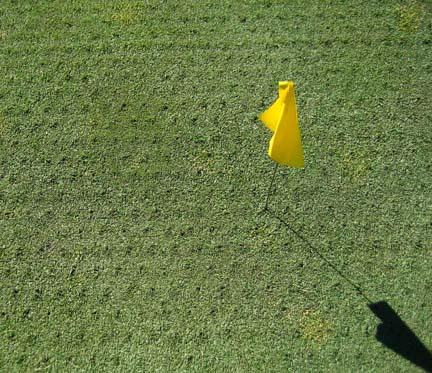 Autumn is a bittersweet time of year for golfers. Leaves changing color make a great game even more enjoyable, but fall typically means aerification time, a semiannual ritual that golfers everywhere despise yet do not fully understand.
Autumn is a bittersweet time of year for golfers. Leaves changing color make a great game even more enjoyable, but fall typically means aerification time, a semiannual ritual that golfers everywhere despise yet do not fully understand.Recent research conducted on bentgrass greens in the Northwest, however, shows that while golfers might not like aerification time, the practice might not as disruptive as they like to think it is.
In fact, researchers came away from the study, the results of which were published in 2013, recommending a combination of pulling cores with quarter-inch tines (at a depth of 3 inches) and verticutting for providing key agronomic benefits and improving putting green playability while also resulting in relatively low disruption.
Conducted from 2008 to 2010 on T-1 bentgrass greens at Palouse Ridge Golf Club and Washington State University's turf research facility, both in Pullman, the study examined the effects of six agronomic programs: coring with half-inch tines (also at 3 inches); venting; verticutting; coring with half-inch tines and venting; coring with half-inch tines and verticutting; and coring with quarter-inch tines and verticutting.
The research team of Proctor, Johnson, Golob, Stahnke and Williams from Washington State University acknowledged that core aerification was disruptive on its face, but recuperation was relatively rapid compared with other treatments. And when coring with quarter-inch tines was followed with sand topdressing and combined with verticutting it resulted in a low number of total days of disruption (35 days in 2008, 38 days in 2009, 68 days in 2010). Coring with quarter-inch tines and verticutting resulted in statistically significant fewer total days of disruption than other treatments on most data collection dates, which occurred on multiple dates each month from April through October. The average daily high in Pullman in October is 67 degrees and the overnight low 25, according to the National Weather Service, and the research showed that turf did not recover from cultivation treatments performed after Oct. 15.
The study also examined whether sand color (tan vs. black) affected the turf's recuperative abilities, but found no statistical difference regarding sand color.
Researchers noted they were concerned with the potential for increased soil temperature with the use of black sand. But the study showed no negative effects in the turf's ability to recover after aerifying and verticutting with the use of black sand for topdressing.

